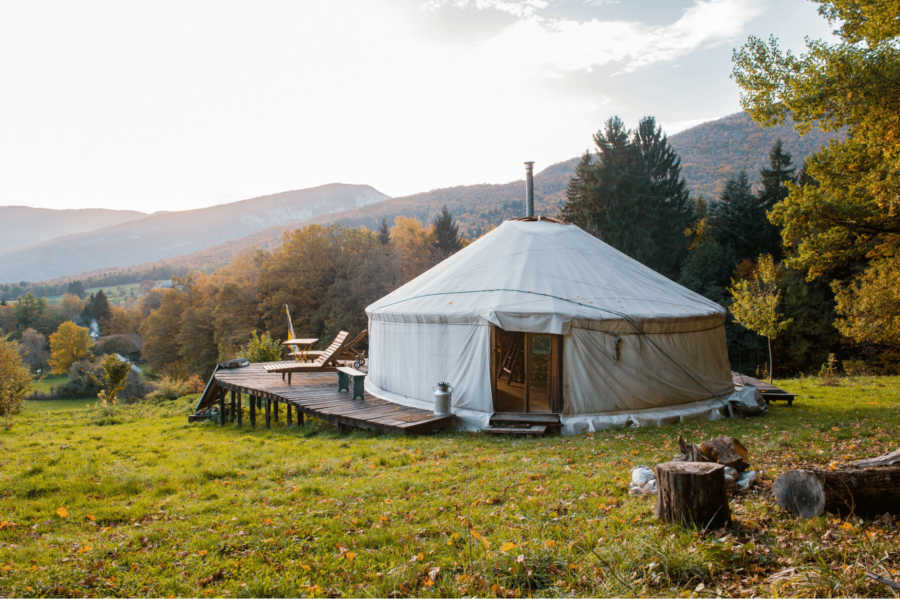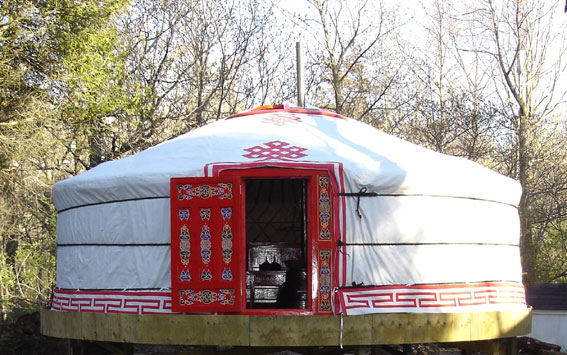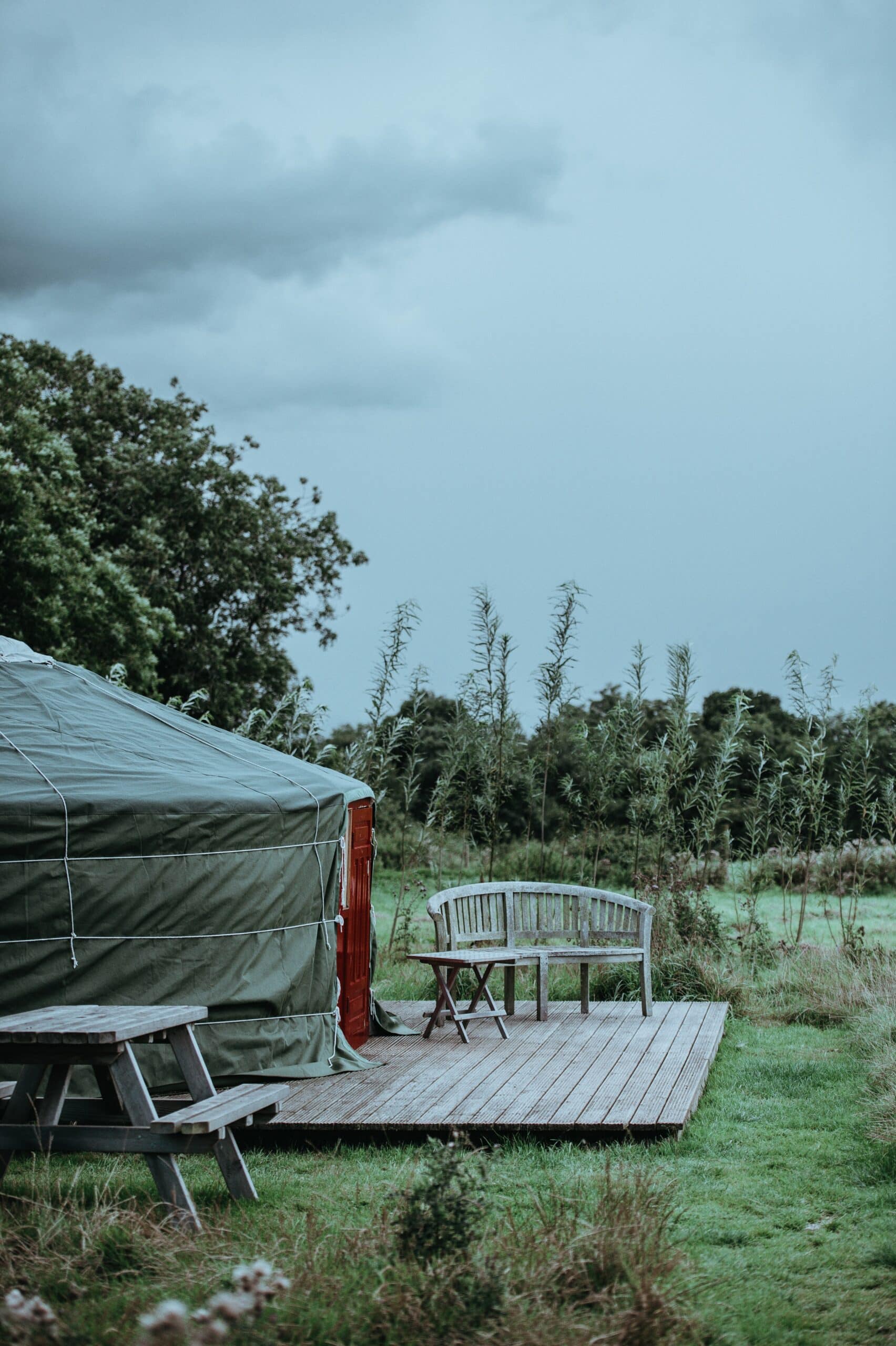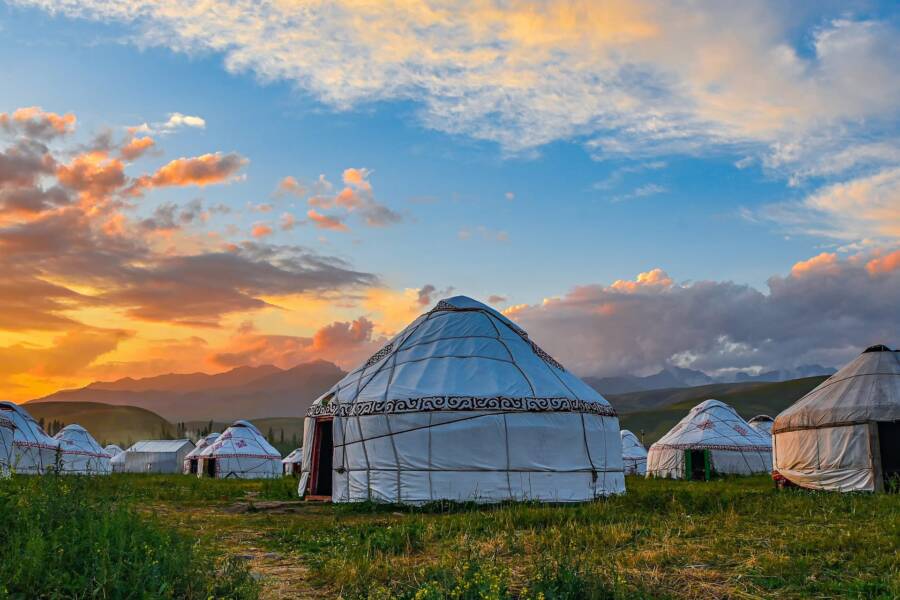Explore the charm of Mongolian tents or yurts, which are traditional homes that provide a window into a distinctive nomadic way of life. Learn about the significance of these great buildings in terms of culture, design, and history.
Introduction:
Many unique traditions that have lasted through the ages may be found in Mongolia, a country rich in history and culture. One of these fascinating customs is the usage of traditional Mongolian tents or yurts or , also known as “ger” or “yurt,” which have been an essential aspect of the nomadic way of life for thousands of years. In this article, we look into the intriguing world of Mongolian yurts and examine their historical significance, unique design, and continuing attractiveness of a traditional way of life.
Image Source: Tiny House Blog.`
History and Cultural Significance of Mongolian Tents.
Tents of Mongolia have a long history that goes back more than a thousand years and have a major cultural significance. The nomadic way of life followed by Mongolian herders and pastoral communities has always depended heavily on these temporary homes. The name “ger” is derived from the Mongolian word for “home,” and for many centuries, these tents have served as the center of Mongolian homes. These yurts were originally made to be portable, as the nomads needed to be able to move their homes with them as they followed their herds of animals. The design of the tent has remained largely unchanged over the centuries, with the exception of the introduction of modern materials like canvas and nylon. The spirit of Mongolian culture and tradition is embodied in these tents, which are more than just physical constructions. They are evidence of the Mongolian people’s flexibility and resilient qualities, which have allowed them to survive and thrive in the difficult and constantly shifting environments of the Central Asian steppes. Also, read more to know Why Mongolian Yurts are the perfect accommodation option at: https://yurtspaces.com/energy-efficient-why-mongolian-yurts-are-the-perfect-accommodation-option/.
Design and Construction of Mongolian Tents.
Mongolian tents are cleverly built to resist the severe weather of the area while offering a cozy and convenient living space. The structure is made of a foldable lattice of hardwood poles that are traditionally put together without nails. A well-insulated and weatherproof shelter is then made by covering this framework with layers of felt and canvas.
Constructing Mongolian tents is a highly skilled process involving a craftsman team. The first step is to create wooden lattice walls, which are made from willow, poplar, or birch, these walls are then connected to a wooden ring at the bottom of the tent, which serves as the base, once the walls are in place, the felt coverings are laid over them and secured with ropes. Finally, the wooden crown is assembled and placed on top of the felt coverings. The ger’s circular shape has great symbolic significance, signifying both the circular cycle of life and the interdependence of all things. An inside fireplace can be effectively heated and used for cooking because of the center opening, known as the “toono,” which also acts as a smoke exit.
Mongolian Tents: A Glimpse into Nomadic Life
Entering a Mongolian tent is like opening a doorway to a past period. With particular sections dedicated to various purposes, the interior arrangement is thoughtfully designed. When guests enter the center of the mongolian tents they are welcomed with a feeling of warmth and kindness. To symbolize the nomadic way of life, the ger’s furnishings are simple and practical, low wooden tables serve as platforms for eating and connecting and colorful carpeting covers the whole floor, the inside is completed with beds, chests, and other necessary goods showing the Mongolians’ ingenuity and skill.
Mongolian Tents: Preserving Tradition in the Modern World.
Tents of Mongolia continue to be a representation of their cultural heritage and tradition in the context of the modern world’s fast change. These ancient tents are still utilized at festivals and gatherings and as lodging for tourists seeking an authentic experience, despite the fact that many Mongolians have moved into more permanent homes. In order to ensure that this enduring emblem of nomadic life continues for the next generation to enjoy and love, efforts are being undertaken to conserve and promote the history of Mongolian tents.

The Benefits of Mongolian Tents and some other specifics.
Mongolian tents offer a number of benefits that make them an attractive option for those looking for a unique way of living. Firstly, they are highly portable and can be set up and taken down quickly, this makes them an ideal option for those who enjoy traveling or who need to move frequently. Additionally, Mongolian yurts are made of natural materials, which makes them eco-friendly and sustainable.
Modern Applications of Mongolian tents
While Mongolian yurts have traditionally been used by nomads, they are now being used in a variety of modern contexts, for example, they are often used as eco-tourism accommodations, as they offer a unique and authentic way of experiencing the local culture. Additionally, they are sometimes used as a temporary shelter in disaster relief situations.
Maintenance of Mongolian tents
Maintaining a Mongolian tent is relatively easy, as long as it is done regularly. The felt coverings should be treated with a water-repellent spray to prevent water damage, and the wooden frame should be checked for any signs of wear and tear. Additionally, the fire pit and chimney should be cleaned regularly to prevent the buildup of soot.
Cost of Mongolian Tents
The cost of a Mongolian tent can vary depending on the size and materials used. A basic yurt can cost anywhere from $1,500 to $5,000, depending on the size and level of customization. However, it’s important to consider the long-term cost savings of living in a Mongolian tent, as they require minimal heating and cooling and are made of durable, long-lasting materials.
Cultural Significance of Tents Of Mongolia
Mongolian yurts hold great cultural significance for the people of Mongolia, as they are a symbol of the country’s nomadic heritage. In addition, the process of constructing a Mongolian tent is seen as a form of artistry, and the craftsmen who build them are highly respected in the community.
Challenges of Living in Mongolian Tents
While living in a Mongolian tent can be a rewarding and unique experience, it does come with its own set of challenges. One of the biggest challenges is adapting to the harsh Mongolian climate, which can be very hot in the summer and very cold in the winter. Additionally, living in a tent requires a certain level of self-sufficiency, as access to modern amenities like electricity and running water may be limited.
Conclusion
Due to the Mongolian yurt’s long history, distinctive design, and historical significance, Mongolian yurts or tents provide a fascinating look into the nomadic lifestyle that has characterized the country for centuries. While they come with their own set of challenges, they also offer a number of benefits, including portability, sustainability, and a connection to nature. These historic homes are a monument to the resilient spirit of a people who are strongly rooted in their culture while modernization continues to transform the globe. A traditional ger’s warm embrace is the perfect place to start if you want to discover the wonder of Mongolia’s history and present. Whether you’re looking for a temporary eco-tourism accommodation or a permanent way of living, Mongolian yurts are a unique and rewarding option.
FAQs
Can Mongolian tents be used in other climates besides Mongolia?
- Yes, Mongolian yurts or tents can be adapted to a variety of different climates, as long as they are properly insulated and equipped with appropriate heating and cooling systems.
How long does it take to construct a Mongolian tent?
- The construction of a Mongolian tent can take anywhere from a few days to several weeks, depending on the size and level of customization.
What materials are used to build Mongolian tents?
- Mongolian yurts or tents are traditionally made from natural materials, such as felt, canvas, and wood.
Can Mongolian tents be used for permanent housing?
- Yes, Mongolian yurts or tents can be used for permanent housing, as they are durable and can withstand harsh weather conditions.
Are Mongolian tents eco-friendly?
- Yes, Mongolian yurts or tents are eco-friendly, as they are made from natural materials and require minimal heating and cooling.
Can Mongolian tents be customized to fit specific needs?
- Yes, Mongolian yurts or tents can be customized to fit specific needs, such as adding additional insulation or incorporating modern amenities like electricity and running water.
How do you maintain a Mongolian tent?
- Proper maintenance of a Mongolian tent involves regular cleaning and airing out, as well as repairs to any tears or holes in the fabric or structure. It’s also important to properly store the tent during periods of non-use to prevent damage.



